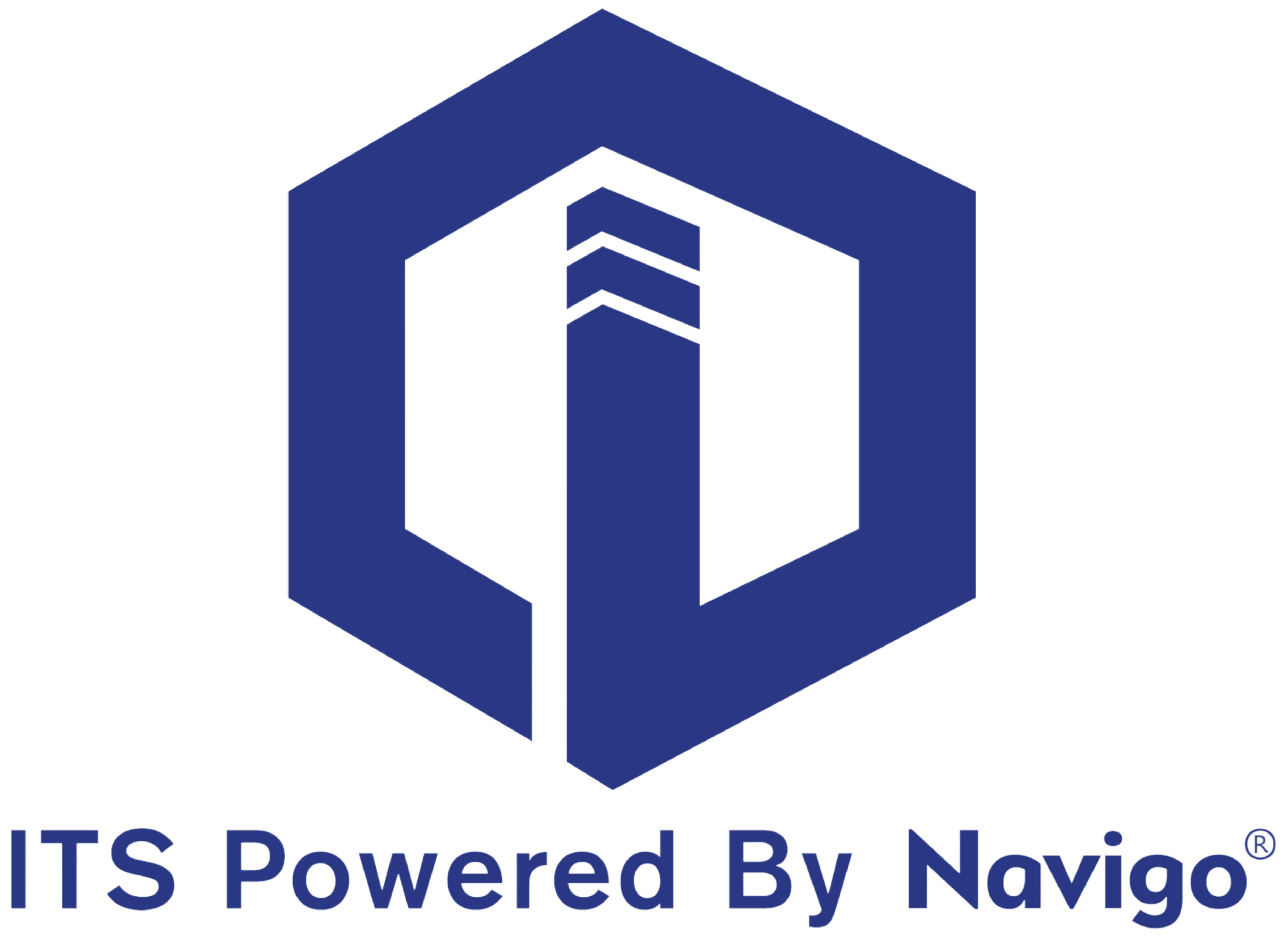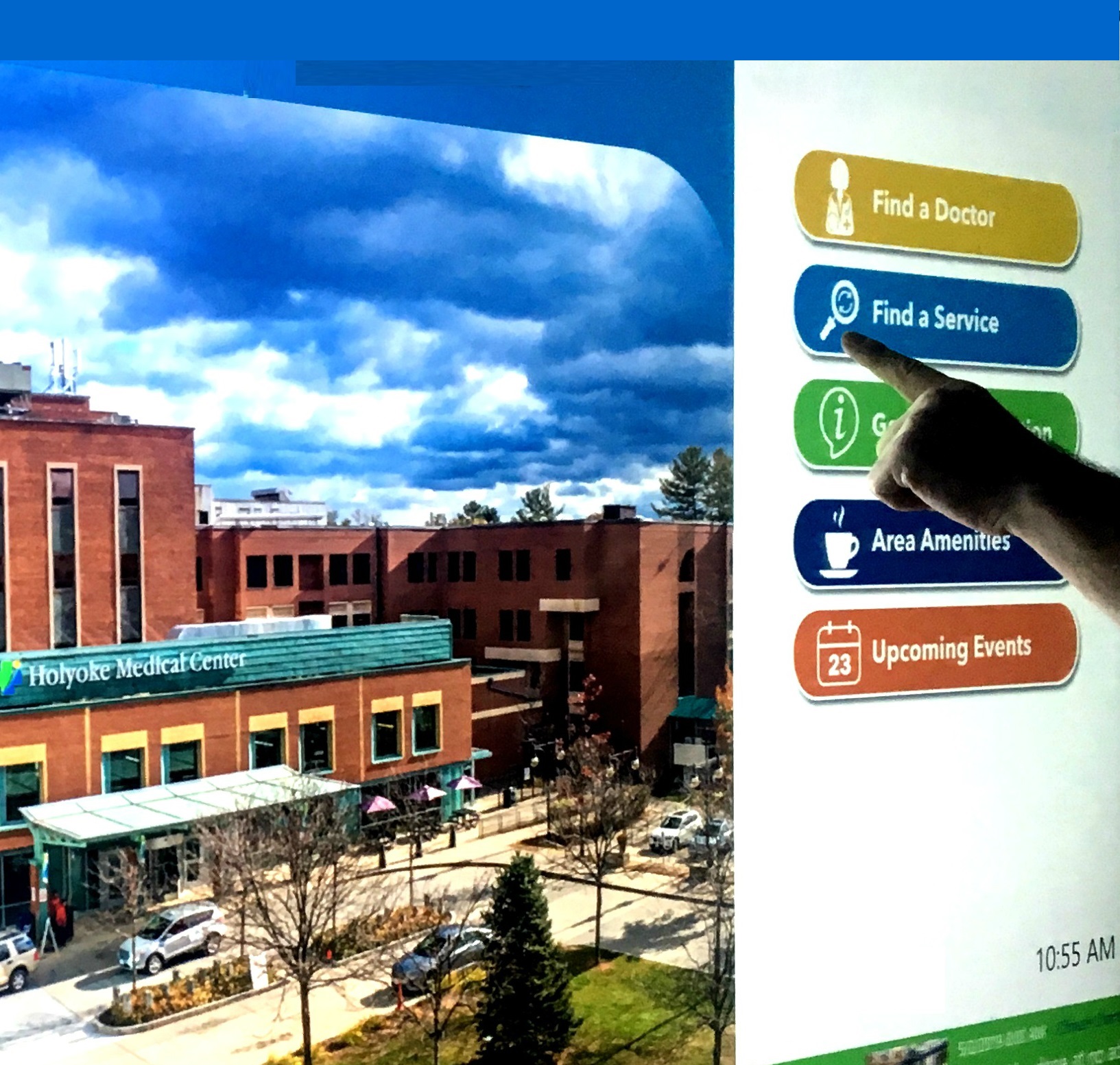Headquarters
7150 Columbia Gateway Drive, Suite L, Columbia, MD 21046
New York Location
112 West 34th Street, 18th floor, Room 18025 New York, NY 10001


A hospital wayfinding solution refers to a set of tools, technologies, and strategies designed to help patients, visitors, and staff navigate the complex and often large environments within a hospital or healthcare facility. The primary goal of a hospital wayfinding solution is to simplify the process of locating specific departments, clinics, patient rooms, and other points of interest within the hospital, ultimately improving the overall user experience.
In simple terms, a hospital wayfinding solution is like a map and a guide that helps you find your way around a big, confusing hospital. It shows you where to go to find things like the doctor's office, the cafeteria, or the restroom. It can even tell you how long it will take to get there and if there are any problems like a crowded area. It's your helpful friend who shows you the best and quickest way to get where you need to go.
Digital wayfinding solutions in hospitals address a critical need for improved navigation in complex healthcare environments. These systems enhance the patient experience by reducing stress and anxiety associated with finding one's way around unfamiliar and often large hospital campuses. By providing clear, intuitive directions, they help patients and visitors reach their destinations efficiently, which in turn improves overall hospital operations by reducing missed or late appointments.
These digital solutions also free up staff time, allowing healthcare professionals to focus on patient care rather than giving directions. They offer accessibility features like multilingual options and accommodations for various disabilities, making hospitals more inclusive. Unlike static signage, digital wayfinding can be updated in real-time, adapting to changes in hospital layout, temporary closures, or emergencies.
Furthermore, these systems can collect valuable data on foot traffic patterns, helping hospitals optimize their layouts and resource allocation. They often integrate with other hospital systems, such as appointment scheduling, to provide personalized navigation. By reducing the need for frequent updates to physical signs, digital wayfinding also has a positive environmental impact.
Ultimately, implementing digital wayfinding solutions contributes to a hospital's image as a modern, patient-focused facility, enhancing both the functionality and perception of the healthcare environment. These systems represent a significant step forward in making hospitals more navigable, efficient, and user-friendly for all who enter their doors.
Digital hospital wayfinding solutions encompass a variety of technologies and tools designed to assist patients, visitors, and staff in navigating healthcare facilities efficiently. Some of the common digital wayfinding solutions used in hospitals include:
Interactive Kiosks: Touchscreen kiosks placed in strategic locations throughout the hospital provide users with interactive maps, directions, and information about departments and services. Users can input their destination and receive step-by-step guidance.
Mobile Apps: Hospitals often develop dedicated mobile apps that users can download to their smartphones or tablets. These apps offer interactive maps, turn-by-turn directions, and real-time information, making them a portable wayfinding tool.
Digital Signage: Digital signage displays located throughout the hospital can provide dynamic information about directions, wait times, and points of interest. These displays may also serve promotional or informational content.
QR Code Scanning: Some hospitals use QR codes placed on signage. Users can scan these codes with their smartphones to access digital maps or directions specific to their location.
Bluetooth and Beacon Technology: Bluetooth beacons placed around the hospital can communicate with users' smartphones, providing proximity-based navigation and information. This technology can offer highly accurate indoor positioning.
Augmented Reality (AR): AR wayfinding apps can overlay directions and information onto a real-time camera view of the user's surroundings, making it easier for users to follow directions.
Geofencing: Hospitals may employ geofencing technology to trigger location-based notifications or to automatically provide directions when a user enters a specific area of the hospital.
Web-Based Wayfinding Tools: Hospitals can provide web-based tools on their websites for users to plan their visit, access maps, and get directions before arriving at the facility.
Text Messaging Services: Hospitals can offer text messaging services that allow users to send a text with their destination to a designated number, and in return, they receive directions to their location.
Real-Time Updates and Alerts: Wayfinding solutions may provide real-time updates on factors like appointment delays, emergency notifications, and changing routes due to construction or events.
These digital hospital wayfinding solutions can be used individually or in combination to create a comprehensive and user-friendly navigation experience within a healthcare facility. The choice of solution often depends on the hospital's budget, goals, and the specific needs of patients and visitors.
The adoption of digital hospital wayfinding solutions can vary based on demographics, with certain groups being more likely to embrace these technologies. Here are some demographic factors that may influence the ease of adoption:
Age: Younger individuals, particularly those in the millennial and Generation Z age groups, tend to be more comfortable with digital technology, including smartphones and mobile apps. They are often early adopters of digital hospital wayfinding solutions.
Tech-Savviness: People who are generally more tech-savvy and have experience using smartphones, tablets, and other digital devices are more likely to adopt digital wayfinding solutions.
Familiarity with Hospitals: Patients and visitors who are frequent hospital-goers, such as those with chronic medical conditions or family members of patients, may be more open to using digital wayfinding solutions after becoming familiar with the hospital environment.
Language Proficiency: Those who are proficient in the language used in the digital wayfinding solution (typically the hospital's primary language) are more likely to use it effectively.
Accessibility Needs: People with disabilities who benefit from accessibility features in digital wayfinding solutions, such as screen readers or voice-activated navigation, are more likely to adopt these technologies.
Cultural Factors: Cultural factors and preferences may influence adoption. Some cultures may have a greater propensity to embrace digital technologies than others.
Education Level: Higher levels of education are often associated with a greater comfort with technology and a higher likelihood of adopting digital solutions.
It's important to note that the healthcare industry recognizes the diversity of its patient population and strives to make digital wayfinding solutions accessible to a wide range of users. Hospitals often design their solutions to be user-friendly, with clear and simple interfaces, as well as accessibility features to accommodate various user needs.
User education and support programs can also play a significant role in increasing adoption among diverse demographic groups. Hospitals may offer training or assistance to help patients and visitors take full advantage of digital wayfinding solutions, regardless of their age or background.
The implementation of a hospital wayfinding solution typically involves a coordinated effort among various hospital departments, and there is often no single department solely responsible for its implementation. The specific departments that play a role in the implementation can include:
Facilities Management, which oversees the physical installation of signs and ensures compliance with building regulations.
Information Technology (IT), responsible for digital wayfinding solutions like interactive kiosks and digital signage.
Hospital Administration, in charge of the strategic direction, funding, and alignment of the wayfinding solution with the hospital's goals.
Marketing and Communications, which may use the solution for promotional purposes and content design
Patient Experience or Guest Services, responsible for user interface design and ensuring the system meets user needs.
The level of involvement of each department can vary depending on the hospital's specific requirements and resources. Successful implementation usually involves collaboration among these departments.
As you begin your research you will find that there are many digital wayfinding options for your hospital. Each of these tools has its own features, capabilities, and price points. As you explore digital wayfinding solutions, consider several key features to find the best technology for your hospital.
Accuracy and reliability. The technology must provide precise directions and real-time updates to ensure users can trust the information they receive.
Ease of use. The interface should be intuitive, with clear visual cues and simple instructions that can be understood by people of all ages and technological proficiencies. Multi-language support and accessibility features for users with disabilities are also important.
Flexibility and scalability allow the system to adapt to the hospital's changing needs. This includes the ability to easily update maps, add new locations, or modify routes as the hospital layout evolves.
Integration capabilities with other hospital systems, such as appointment scheduling and electronic health records, can provide personalized navigation experiences for patients.
Robust analytics tools. Analytics help hospitals gather insights on foot traffic patterns, popular destinations, and potential bottlenecks, enabling data-driven decisions for improving patient flow and resource allocation.
Multi-platform support. Allowing users to access wayfinding information through various channels such as mobile apps, web interfaces, and on-site kiosks is essential.
Data Security and Privacy. Ensure that any collected information is protected and compliant with healthcare regulations.
Navigo®, a cloud-based software solution for digital display systems, signage and wayfinding was created with these important features in mind. It is the best cloud-based wayfinding technology available and has customization options that allow hospitals to brand the wayfinding system to match their visual identity and incorporate specific requirements unique to their facility.
When looking for the best wayfinding technology, start with Navigo®.
To understand your hospital's wayfinding needs, you should conduct a comprehensive assessment of your facility and its users. Start by analyzing your current navigation system, identifying pain points, and gathering feedback from various stakeholders.
Begin with a walkthrough of your hospital, putting yourself in the shoes of patients, visitors, and new staff. Note areas where people frequently seem lost or confused. Pay attention to complex intersections, department entrances, and transitions between buildings.
Collect data on common destinations and routes. This could involve surveying front desk staff about frequently asked directions or analyzing appointment schedules to identify high-traffic areas.
Engage with different user groups through surveys, focus groups, or interviews. Include patients, visitors, staff, and especially those with mobility challenges or language barriers. Their experiences and difficulties can provide valuable insights.
Review your hospital's complaint logs and patient satisfaction surveys for navigation-related issues. These can highlight problems you might not have noticed.
Assess your current signage and any existing wayfinding tools. Are they clear, consistent, and up-to-date? Are they accessible to all users?
Consider your hospital's future plans. Will there be renovations, expansions, or department relocations that might affect navigation?
Evaluate your technological infrastructure. What kind of digital solutions could your current systems support? Would implementing new technology require significant upgrades?
Analyze your hospital's demographics. Are there specific needs based on age, language, or cultural factors that should be addressed?
Finally, consider your budget and resources. What level of investment in wayfinding solutions is feasible for your hospital?
By thoroughly examining these aspects, you'll gain a clear understanding of your hospital's unique wayfinding needs, allowing you to choose or develop the most effective solution.
Implementing a new digital wayfinding system can be a complex process. It takes a lot of consideration and evaluation to properly implement a system that adequately accomplishes the hospital's goals, offers an improved visitor experience, and is compliant. As your digital signage and wayfinding partner, our team at Interactive Touchscreen Solutions, Inc. can guide you through each step of the process. From understanding your needs and developing the right system with your hospital in mind to installing the system and hardware, we are with you every step of the way.
Contact the team if you have questions or want to begin creating your hospital's unique digital wayfinding system.
Explore itouchinc.com for more information on our solutions or contact us to explore the impact digital signage can have on your bottom line.
7150 Columbia Gateway Drive, Suite L, Columbia, MD 21046
112 West 34th Street, 18th floor, Room 18025 New York, NY 10001
Toll-Free
Phone
© Copyright 2025 ITS, Inc. All rights reserved.
Stay in touch with the latest news and updates from ITS, Inc.
7150 Columbia Gateway Drive, Suite L
Columbia, MD 21046
112 West 34th Street, 18-025
New York, NY 10001